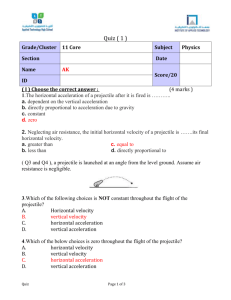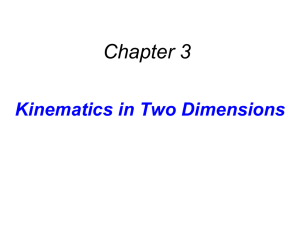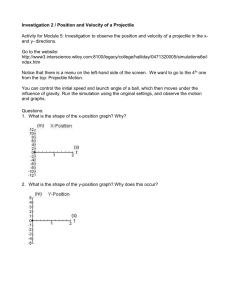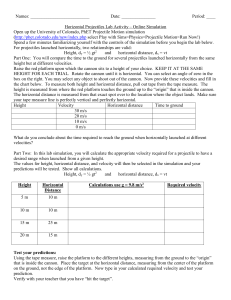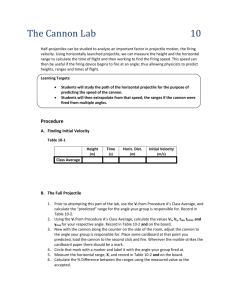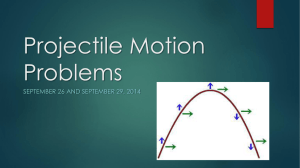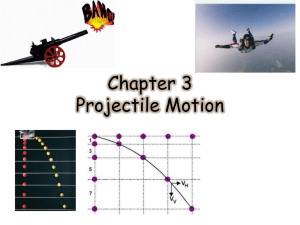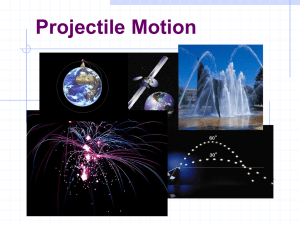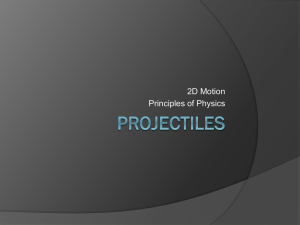Ch. 5 practice test
advertisement
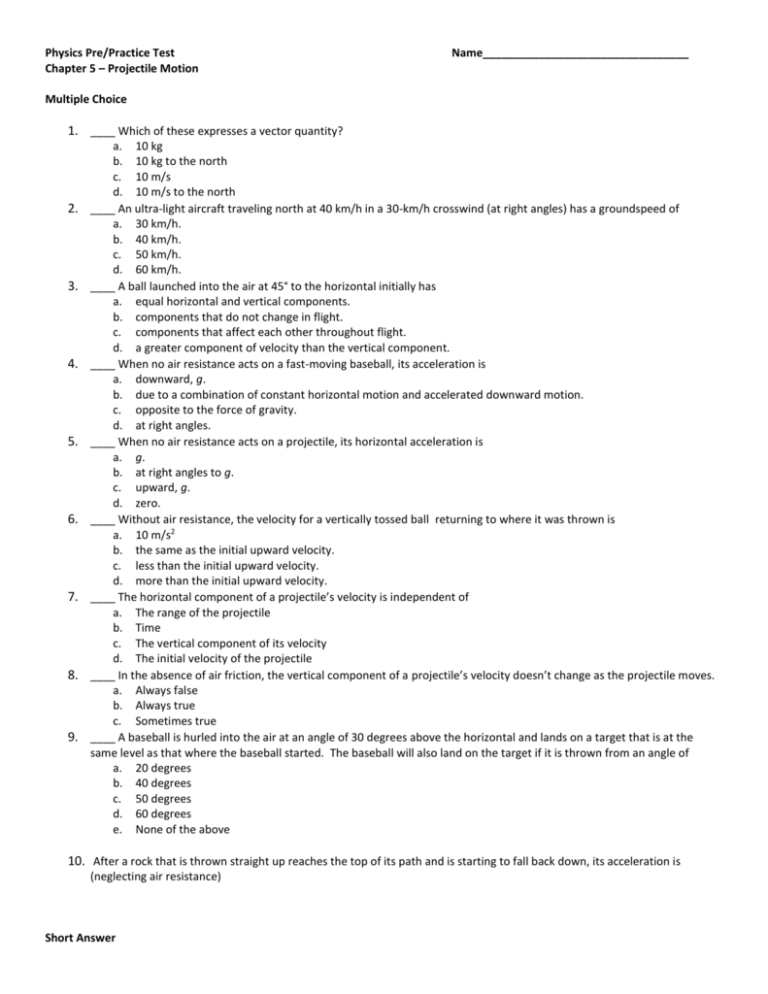
Physics Pre/Practice Test Chapter 5 – Projectile Motion Name_________________________________ Multiple Choice 1. ____ Which of these expresses a vector quantity? 2. 3. 4. 5. 6. 7. 8. 9. a. 10 kg b. 10 kg to the north c. 10 m/s d. 10 m/s to the north ____ An ultra-light aircraft traveling north at 40 km/h in a 30-km/h crosswind (at right angles) has a groundspeed of a. 30 km/h. b. 40 km/h. c. 50 km/h. d. 60 km/h. ____ A ball launched into the air at 45° to the horizontal initially has a. equal horizontal and vertical components. b. components that do not change in flight. c. components that affect each other throughout flight. d. a greater component of velocity than the vertical component. ____ When no air resistance acts on a fast-moving baseball, its acceleration is a. downward, g. b. due to a combination of constant horizontal motion and accelerated downward motion. c. opposite to the force of gravity. d. at right angles. ____ When no air resistance acts on a projectile, its horizontal acceleration is a. g. b. at right angles to g. c. upward, g. d. zero. ____ Without air resistance, the velocity for a vertically tossed ball returning to where it was thrown is a. 10 m/s2 b. the same as the initial upward velocity. c. less than the initial upward velocity. d. more than the initial upward velocity. ____ The horizontal component of a projectile’s velocity is independent of a. The range of the projectile b. Time c. The vertical component of its velocity d. The initial velocity of the projectile ____ In the absence of air friction, the vertical component of a projectile’s velocity doesn’t change as the projectile moves. a. Always false b. Always true c. Sometimes true ____ A baseball is hurled into the air at an angle of 30 degrees above the horizontal and lands on a target that is at the same level as that where the baseball started. The baseball will also land on the target if it is thrown from an angle of a. 20 degrees b. 40 degrees c. 50 degrees d. 60 degrees e. None of the above 10. After a rock that is thrown straight up reaches the top of its path and is starting to fall back down, its acceleration is (neglecting air resistance) Short Answer 11. Suppose that an airplane normally flying at 80 km/h encounters wind at a right angle to its forward motion—a crosswind. Will the airplane fly faster or slower than 80 km/h? Explain. 12. At the instant a horizontally pointed cannon is fired, a cannonball held at the cannon’s side is released and drops to the ground. Which cannonball strikes the ground first, the one fired from the cannon or the one dropped? Explain. 13. A projectile is launched at an angle into the air. Neglecting air resistance, what is its vertical acceleration? Its horizontal acceleration? 14. At what point in its path does a projectile have minimum speed? Explain. Problem Solving 15. What is the resultant velocity of a ball that is launched with a horizontal speed component of 7 m/s and a vertical speed component of 10 m/s? 16. A cannonball is launched horizontally from the top of a 80-meter high cliff. With what horizontal velocity must it have to reach a target 200 m away? 17. In a physics lab, a 10 g marble, after rolling down a ramp, shoots off the edge of a table with a horizontal velocity of 1.2 m/s. The table is 1.0 m high. You want the marble to land in a shallow cup on the floor. How far from the edge of the table should you place the cup? 18. A cannon ball is shot at 36o at a velocity of 90 m/s. What is its a. horizontal component of velocity b. vertical component c. time of flight d. maximum height e. range

